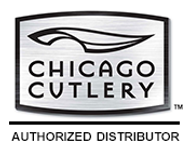We all know and love the time-saving benefits of power tools. They help us tackle any project, large or small, and they sometimes take a beating in the process. When is the last time you showed a little TLC to your power tools? After all, they need maintenance to perform properly, delivering the precision and power that we anticipate with each use. Just a little care will go a long way in extending the life and functionality of your tools. The pros at Helton Tool & Home offer 7 tool care and maintenance tips.
Tip 1: Be Kind to Your Tools
Be kind to your tools, and they will be kind to you. First and foremost, try to be gentle with tools. While most power tools have durable housing and boast resistance to damage from impact, there’s no reason to test those attributes beyond the rigors of normal use. Make every effort not to drop your tools; don’t toss them to co-workers or use them for purposes other than for what they are intended. (The user’s manual is an excellent resource for learning the intended purpose of and care for any tool.) Nothing makes us happier than tools that outlast their expected performance.
Tip 2: Keep Them Clean
Keeping your power tools clean and free of debris is another crucial step in ensuring long tool life. After each use, make sure to clean dust, dirt, and grime off the housing of your power tools with a cloth and toothbrush. This will expose any cracks in the housing (see Tip 3). While some tool owners use an air compressor to blow air through the vents, many experts advise skipping this step, as it can send particles into the tool’s more sensitive areas, thus doing more harm than good. Instead, gently shake out any debris you can before vacuuming out the rest. A pair of tweezers or a flexible pipe cleaner may be used to remove larger chips that won’t shake free from vents and other delicate areas. These efforts will help your power tools run cooler and last longer.
Tip 3: Keep An Eye On Loose Fasteners or Cracks
Be vigilant about keeping visual inventory of your tools. If you find loose screws or nuts, tighten them. Applying Loctite to the threads during the process can help them stay in place longer. Look for cracks in the housing and repair them before they get bigger. If the crack is larger than a hairline, it’s best not to use the tool until it is repaired.
Tip 4: Be Mindful of the Cord
Check your power tools for performance problems and promptly take care of any issues you identify—either on your own or by sending the tools to a shop—before small problems become big problems. A common issue with corded tools is the frequency with which cords become exposed, frayed, or nicked, which can be dangerous to users and those in proximity, not to mention the tool itself. Repair or replace damaged cords immediately.
Tip 5: Pay Attention to the Parts
Be mindful of all power tool parts prone to failure, such as carbon brushes, switches, assemblies, and more. Replace brushes when you notice arcing inside the motor housing of a running tool—these small, harmless sparks are a good indicator that brushes are wearing out. (Regardless of which one started sparking first, never replace one brush and not the other.) Check moving parts often to ensure they’re moving properly. Also look for parts that are moving when they aren’t supposed to be! Your immediate attention will help avoid bigger problems down the road. Nicks in jigsaw and circular saw shoe plates should be filed annually or before tool storage, and bent shoes may be flattened using Vise-Grips. Examine the shoe to be sure it is perpendicular to the blade.
Tip 6: Lubricate, Lubricate
Lubricate the moving parts in your power tools to keep them running smoothly. Pay extra attention to parts where metal contacts metal. Follow the instructions in your owner’s manual to lubricate with the proper lubricant medium, application method, and frequency.
Tip 7: Store Power Tools Properly
When power tools will not be utilized for a period of time, they are most comfortable in their original cases or wrapped in a protective cloth or similar covering. This protects them from the elements, scratches, nicks, falls, and many other damaging outcomes. Avoid storing even protected tools in cold, hot, or humid environments, as these conditions will reduce overall tool life. Desiccant packs added to a tool box or storage drawer may also help reduce occurrences of surface rust. If the time between uses will be relatively brief, make sure tools are properly stowed to avoid damage. We especially love the organization displayed in this picture from ShamrockWoodworks on Instagram.
 Credit: @ShamrockWoodworks
Credit: @ShamrockWoodworks
Following these steps with some consistency—whether it be after each use, on a monthly basis, or annually—will help ensure a long and productive life for your power tools. What do you think? Did we miss an important tip? Want to add clarification to any of the tips we offered? Let us know in the comments.
Please share this post if it’s something you think your friends should know!















